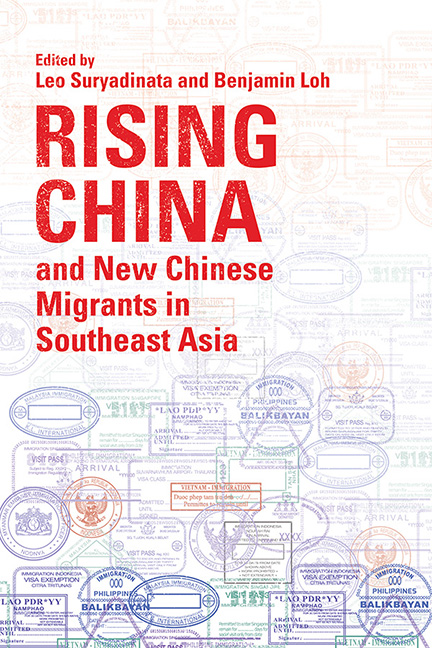Book contents
- Frontmatter
- Contents
- About the Contributors
- Introduction: Rising China and New Chinese Migrants in Southeast Asia
- Part I General Overviews on Rising China and Xin Yimin
- Part II China’s Soft Power, Xin Yimin and Local Communities
- Part III New Chinese Migrants and Local Communities
- Part IV New Chinese Migrants and Local Economies
- Index
7 - “Old” and “New” Chinese Communities in Laos: Internal Diversity and External Influence
Published online by Cambridge University Press: 09 January 2024
- Frontmatter
- Contents
- About the Contributors
- Introduction: Rising China and New Chinese Migrants in Southeast Asia
- Part I General Overviews on Rising China and Xin Yimin
- Part II China’s Soft Power, Xin Yimin and Local Communities
- Part III New Chinese Migrants and Local Communities
- Part IV New Chinese Migrants and Local Economies
- Index
Summary
Member states of the Association of Southeast Asian Nations (ASEAN) are encountering both opportunities and concerns in the face of an ever-accelerating Chinese economic expansion. For the countries in mainland Southeast Asia, especially along the Mekong, the concerns are all the more acute because of a shared riverine system and, in some cases, shared land border with China (Santasombat 2015, 2017). With the launch of the Greater Mekong Subregion (GMS) Development Programme sponsored by the Asian Development Bank (ADB) and the corresponding China-sponsored Yunnan Gateway Project, it has become apparent that China’s national economic strategy in this area is to (1) create maritime accessibility for the ‘Greater Southwestern China’, (2) extract natural resources from the comparatively underdeveloped neighbouring countries, and (3) enhance the regional market as well as investment opportunities for Chinese enterprises. Where then does Laos stand in this context?
Laos is the only landlocked Southeast Asian country. Except for the proposed Kunming–Bangkok high-speed railway, most of China’s economic operations in Laos since the 1990s extend to resource extraction and the exploration of market and investment opportunities. It is worth noting that, among the three countries that share land borders with China—Vietnam, Laos and Myanmar—Laos is the only one to have not witnessed much anti-Chinese protests in recent years. While this is not the place to examine the sources of these protests—to what extent were they civic-led or partially government-induced—the fact remains that, compared to Myanmar and Vietnam, Laos is generally accommodating to the increasing presence of Chinese economic interests in the country. Shared political ideology contributes to this accommodation. Not only does communist comradeship and similar political-administrative mentalities between Laos and China provide a fundamental like-mindedness for the decision makers of the two countries, Laos is also the only nominal socialist country in the region that maintains an amicable relationship with China (Chiang and Cheng 2015, p. 90).
In addition to maintaining a warm relationship with China, a number of geographical and historical factors are also significant in the position of Laos towards Chinese economic expansion. Because it was landlocked, the area consisting of the current Laos was the last to be incorporated into French Indochina in 1893.
- Type
- Chapter
- Information
- Rising China and New Chinese Migrants in Southeast Asia , pp. 127 - 140Publisher: ISEAS–Yusof Ishak InstitutePrint publication year: 2022

